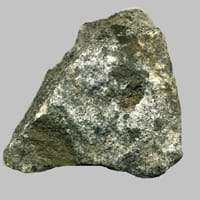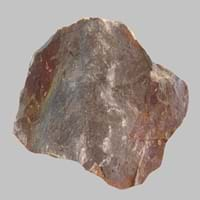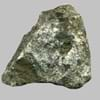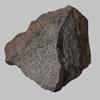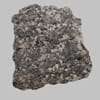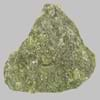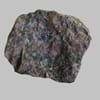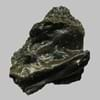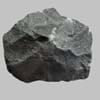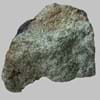Ijolite and Hawaiite
Definition
Definition
Ijolite is an intrusive igneous rock which is composed mainly of nepheline and an alkali pyroxene, usually aegirine-augite
Hawaiite is volcanic rock that resembles basalt. It is an olivine basalt with intermediate composition between alkali olivine and mugearite
History
Origin
Finland, Europe
Hawaii Islands
Discoverer
Unknown
Joseph Iddings
Etymology
From the first syllable of the Finnish words Ii-vaara, Iijoki, &c. commonly used geographical names in Finland, and the Gr. Xiflos, a stone
From Hawaii Islands
Class
Igneous Rocks
Igneous Rocks
Sub-Class
Durable Rock, Medium Hardness Rock
Durable Rock, Medium Hardness Rock
Family
Group
Plutonic
Volcanic
Other Categories
Coarse Grained Rock, Opaque Rock
Opaque Rock
Texture
Texture
Earthy, Granular
Glassy, Massive, Porphyritic, Scoriaceous, Vesicular
Color
Brown, Buff, Cream, Green, Grey, Pink, White
Black, Brown, Light to Dark Grey
Maintenance
Less
Less
Durability
Durable
Durable
Water Resistant
Yes
Yes
Scratch Resistant
Yes
Yes
Stain Resistant
No
No
Wind Resistant
No
Yes
Acid Resistant
No
No
Appearance
Banded and Foilated
Dull and Soft
Uses
Architecture
Interior Uses
Decorative Aggregates, Entryways, Floor Tiles, Flooring, Homes, Interior Decoration, Kitchens
Decorative Aggregates, Floor Tiles, Flooring, Homes, Hotels, Interior Decoration, Kitchens
Exterior Uses
As Building Stone, As Facing Stone, Garden Decoration, Office Buildings, Paving Stone
As Building Stone, As Facing Stone, Paving Stone, Garden Decoration, Office Buildings
Other Architectural Uses
Curbing
Curbing
Industry
Construction Industry
As Dimension Stone, Cement Manufacture, Construction Aggregate, for Road Aggregate, Landscaping, Making natural cement, Manufacture of Magnesium and Dolomite Refractories
As Dimension Stone, Cobblestones, Rail Track Ballast, Roadstone
Medical Industry
Not Yet Used
Not Yet Used
Antiquity Uses
Artifacts, Monuments, Sculpture, Small Figurines
Artifacts
Other Uses
Commercial Uses
Cemetery Markers, Creating Artwork
Creating Artwork, Sea Defence
Types
Types
Not Available
Not Available
Features
Application of acids on the surface causes cloudy frosting, Available in Lots of Colors and Patterns, Is one of the oldest rock
Has High structural resistance against erosion and climate, Very fine grained rock
Archaeological Significance
Monuments
Used
Used
Famous Monuments
Data Not Available
Easter Island in the Polynesian Triangle, Pacific Ocean
Sculpture
Used
Not Yet Used
Famous Sculptures
Data Not Available
Not Applicable
Pictographs
Used
Used
Petroglyphs
Used
Used
Figurines
Used
Not Yet Used
Fossils
Absent
Absent
Formation
Formation
Ijolite is a fine-grained, hard rock which is a type of metasomatite, essentially altered basalt. It forms with or without crystallization, either below the surface as intrusive rocks or on the surface as extrusive rocks.
Hawaiite is a fine-grained, hard rock that forms when bits of lava shoot out of volcanoes and reach the Earth's surface.
Composition
Mineral Content
Albite, Amphibole, Biotite, Cancrinite, Feldspar, Hornblende, Plagioclase, Pyroxene, Sodalite
Olivine, Plagioclase, Pyroxene
Compound Content
Aluminium Oxide, CaO, Iron(III) Oxide, FeO, Potassium Oxide, MgO, MnO, Sodium Oxide, Phosphorus Pentoxide, Silicon Dioxide
Aluminium Oxide, CaO, Iron(III) Oxide, FeO, Potassium Oxide, MgO, MnO, Sodium Oxide, Phosphorus Pentoxide, Silicon Dioxide, Titanium Dioxide
Transformation
Metamorphism
Yes
Yes
Types of Metamorphism
Burial Metamorphism, Cataclastic Metamorphism, Contact Metamorphism
Impact Metamorphism
Weathering
Yes
Yes
Types of Weathering
Biological Weathering, Chemical Weathering
Biological Weathering
Erosion
Yes
No
Types of Erosion
Chemical Erosion, Water Erosion, Wind Erosion
Not Applicable
Properties
Physical Properties
Hardness
5.5-6
6
Grain Size
Coarse Grained
Not Applicable
Fracture
Conchoidal to Uneven
Conchoidal
Streak
White
Not Available
Porosity
Less Porous
Less Porous
Luster
Greasy to Dull
Not Available
Compressive Strength
Not Available
37.40 N/mm2
28
Cleavage
Poor
Not Applicable
Toughness
Not Available
Not Available
Specific Gravity
2.6-2.76
Not Available
Transparency
Opaque
Opaque
Density
2.6 g/cm3
Not Available
Thermal Properties
Resistance
Heat Resistant, Impact Resistant, Wear Resistant
Heat Resistant, Pressure Resistant, Wear Resistant
Reserves
Deposits in Eastern Continents
Asia
Indonesia, Iran, Russia, Saudi Arabia, Sri Lanka, Taiwan, Thailand, Turkey, Vietnam
India, Russia
Africa
Angola, Egypt, Madagascar, Namibia, Nigeria, South Africa
South Africa
Europe
England, Finland, Germany, Great Britain, Greece, United Kingdom
Iceland
Others
Not Yet Found
Hawaii Islands
Deposits in Western Continents
North America
Canada, USA
Canada, USA
South America
Colombia
Brazil
Deposits in Oceania Continent
Australia
New Zealand, Queensland, Western Australia
Not Yet Found
All about Ijolite and Hawaiite Properties
Know all about Ijolite and Hawaiite properties here. All properties of rocks are important as they define the type of rock and its application. Ijolite and Hawaiite belong to Igneous Rocks.Texture of Ijolite is Earthy, Granular whereas that of Hawaiite is Glassy, Massive, Porphyritic, Scoriaceous, Vesicular. Ijolite appears Banded and Foilated and Hawaiite appears Dull and Soft. The luster of Ijolite is greasy to dull while that of Hawaiite is not available. Ijolite is available in brown, buff, cream, green, grey, pink, white colors whereas Hawaiite is available in black, brown, light to dark grey colors. The commercial uses of Ijolite are cemetery markers, creating artwork and that of Hawaiite are creating artwork, sea defence.
|
||
|
||
|
